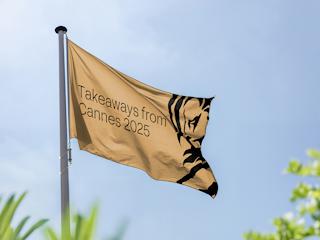What is it?
Ancillary revenue has been a source for growth for airlines. As an example, United generated 6.2 billion in revenue through ancillary services in 2016.1
This revenue comes from a variety of sources:2
- Fees, food, bags, etc
- Commissions received from hotel or car partnerships
- Frequent Flyer partnerships with credit card companies
- Advertising sold in magazines, on planes, etc
What is the impact?
There is limited opportunity in this competitive fare market to increase revenue substantially simply by putting people in seats. It is necessary to also provide goods or services that bring ancillary revenue to the airline.
The airline industry overall is seeing dramatic changes:3
See the trend? Looking at general revenue growth we can see even more changes: 4 5 6 7
You can see this trend as well with by looking at the lack of revenue growth (in the case of United a decrease) of total revenue from 2012-2016. There are a lot of factors that influence this, fuel costs being one, but it is clear without substantial revenue growth in ancillary revenue the Airline industry would be struggling.
This is where revenue growth is really achievable and Valtech believes improved customer experiences can increase revenue opportunities after booking before the trip, at the airport, in air, and post arrival. Creating a seamless customer journey that takes advantage of the propensity to spend at all the right moments is the answer.
What does this look like?
A frictionless transaction experience can simplify purchasing to unlock the potential of impulse buying decisions. Amazon identified this as the foundation of their success when adding 1-click shopping in 1997.8 This has created an omni-channel commerce experience that allows consumers to act quickly providing multiple micro transactions to be made rather than relying on bulk purchases. With either business or leisure travel, the aptitude for discretionary spending is high. Digital, specifically mobile, enables this opportunity during a travel experience.
Where do the opportunities live?
They live throughout the entire customer journey. But to be successful you must provide the right content and experience to a user at the right part of their journey. Applying contextual awareness to personalization is a necessity. What does this mean exactly?
When a customer is sitting in their seat on the plane, don’t promote a car to the airport. When a flight leaves at 5PM, don’t let a traveller pre-book a breakfast meal as it won’t be available. It is essential to understand some key data points to provide the appropriate content to gain the desired ancillary revenue:
-
How soon before the travel date is it? The content you provide a customer 45 days in advance, versus 15 days in advance, versus 1 day in advance is all different. The items they need to prepare for their journey is influenced by how close they are to going on the journey.
-
What marketing segment are they in? Are they a business traveller or a leisure traveller? Are they visiting a city or a beach? These bits of information can be used to categorize the customer in the right segment to them provide them the most relevant content or promotions in an effort to increase revenue.
-
Are they at the airport yet? You might want to remove friction for someone to get to the airport, or provide an easier path to food or drink options before their trip takes off.
-
What time of day is it? Personalizing the up-sell opportunities based on time of day is a no brainer.
-
Are in they in the air, are they connecting at the next airport, and how much longer is left on their flight? Understanding the complexities associated with a journey while simplifying for a customer is a core obligation for an airline. Mobile and other technologies can enable a more seamless flow for customers as they navigate through their flight and connections. This is where pre-ordering food, finding the coffee shop at the airport in between gates, or providing transit information can be of tremendous value for the traveller.
How can you put it into action?
All of this seems like a no-brainer, but a combination of good customer experience, a 360 degree view of the customer and the context of where they are, and having the right technology in place is critical to make it happen.
Pittsburgh Airport (PIT) is now open to the public – the first time an airport has been available to non-travellers since 9/11. Taking on characteristics that make it seem more like a shopping-mall than an airport terminal is an innovative move inspired by airports like Dallas/Ft. Worth (DFW) where ancillary revenue is an integral part of their business strategy.9
But even beyond a physical change in the terminal, technology is an enabler with mobile sitting in the driver's seat. Mobile allows cost of most hardware for delivery to rest solely in the hands of the consumer. This means the airline or airport can invest in software, data, and experiences to drive ancillary revenue opportunities. Mobile inherently has a tremendous amount of contextual data from location and time. Combined with traveller data like profile, past and future bookings, the formula is there for success. It all comes down to providing value to the customer and simplifying their travel journey.
References:
-
https://nrf.com/news/21-ways-amazon-changed-the-face-of-retail
-
https://thepointsguy.com/2017/08/pit-opens-terminal-non-travelers/




